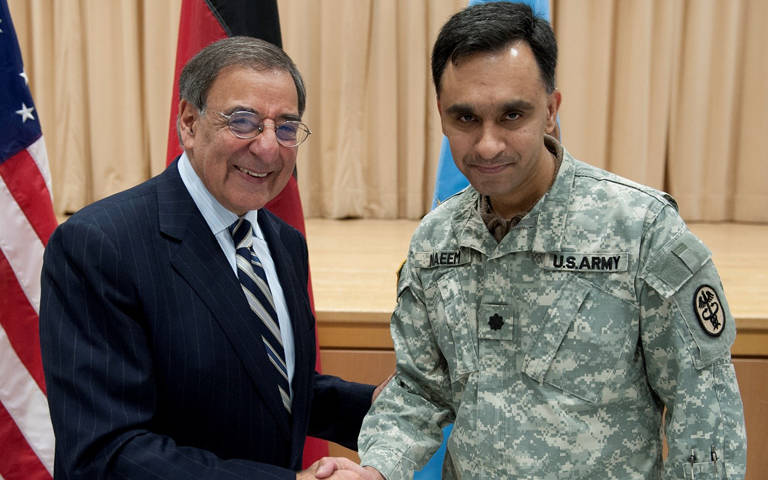The most effective leaders create environments in which others succeed. Rather than simply delegating tasks, they seek to serve those they lead. This leadership style, known as servant leadership,
is based on the relationship between the leader and follower being a mutual search for wholeness.1
This servant leadership style applies heavily to military radiology — a field that demands quick thinking, effective communication skills, and the ability to improvise in the worst of situations. The Bulletin spoke with Col. Mohammad Naeem, MD, FACR — a radiologist in the U.S. Army Medical Corps at Fort Belvoir Community Hospital — to discuss how being a servant leader has helped him achieve and maintain a fulfilling career.
Why did you become a military radiologist?
I came to the United States as a teenager, after having been educated in an elite private grammar school in Pakistan that followed the British education system. Almost all the males in my family were British- or American-educated engineers, and most of my aunts had master’s degrees in the arts and humanities — but my parents wanted a doctor in the family. I wanted to be an Air Force pilot, submariner, or a federal agent, but had to bow to my family’s decision to enter medicine.
Radiology was my escape from the traditional white coat, prescription pad, scalpel, and stethoscope version of medicine. Meanwhile, joining the army was my way of ultimately fulfilling my desire to be a military officer. I was excited to join the U. S. military as a way to honor and protect my adopted homeland.
How does leadership on the battlefield translate to leadership in radiology?
The Army recognizes seven values that must be developed in its individuals: loyalty, duty, respect, selfless service, honor, integrity, and personal courage. Applying these tenets to daily practice is critical for successful leadership. The deployment experience has taught me how to work with limited resources and improvise in difficult situations. Even if we don’t have the necessary tools with us, we must provide the best care we can. Sometimes that means we may not get the proper medical supplies or be able to adequately evacuate a patient in time. In the same way, radiologists must work with the tools they have available and provide the highest quality care possible. Deployment teaches one tenacity, perseverance, cross-cultural interaction, relying on your battle buddies to save each other’s lives in dire situations, and the application of military decision-making processes to everyday radiology problem-solving.
In the military, information sharing is also critical to success. It requires you to work beyond the reading room with diverse teams of all education levels and backgrounds. You learn not only how to communicate effectively with different individuals, but also how important broad input is for a group to succeed. That is, to me, the most important trait of a servant leader: being able to listen receptively to what individuals have to say, accepting them and having empathy for them, and building community in the workplace.
The Army recognizes seven values that must be developed in its individuals: loyalty, duty, respect, selfless service, honor, integrity, and personal courage.
How do you incorporate patient-centered care in a fast-paced, high-stakes environment?
Recently, Gen. Mark A. Milley, the 20th Chairman of the Joint Chiefs of Staff, sent out guidance that said, “Take care of our people and families. The health and safety of service members, retirees, and their families are in our hands. They are our most precious assets, and the nation entrusts their healthcare to us. This is serious work, and every day we should be determined to make sure our performance is equal to that responsibility.”
To truly take care of our patients, we must look at every imaging exam as more than pixels on a screen or just another interesting case. There is a human being behind those images. That person is someone’s husband, wife, father, mother, daughter, son, brother, or sister. I am reminded of this every time I pull up an imaging study. To me, considering the patient and the life behind the image is the basic tenet of patient-centered care.

